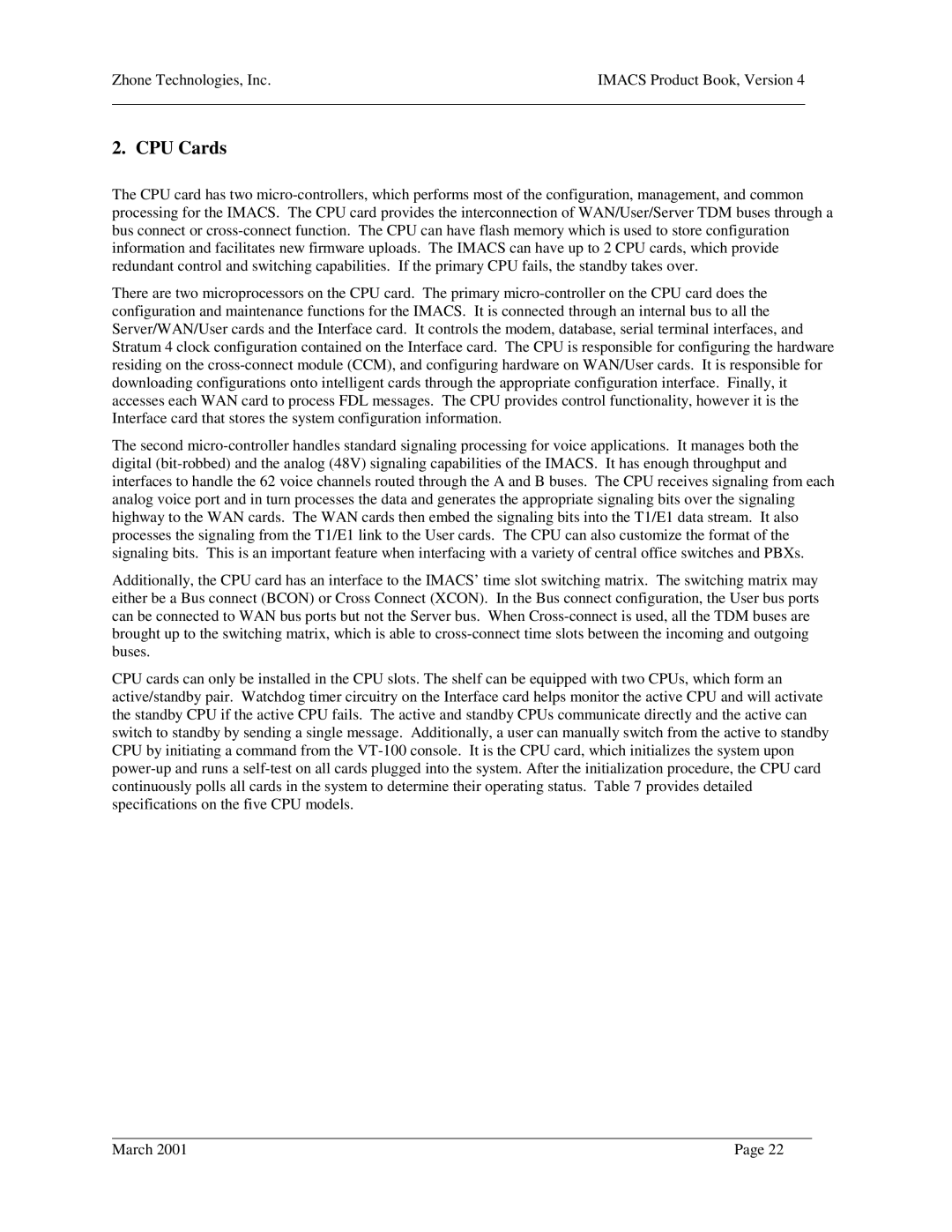Zhone Technologies, Inc. | IMACS Product Book, Version 4 |
|
|
2. CPU Cards
The CPU card has two
There are two microprocessors on the CPU card. The primary
The second
Additionally, the CPU card has an interface to the IMACS’ time slot switching matrix. The switching matrix may either be a Bus connect (BCON) or Cross Connect (XCON). In the Bus connect configuration, the User bus ports can be connected to WAN bus ports but not the Server bus. When
CPU cards can only be installed in the CPU slots. The shelf can be equipped with two CPUs, which form an active/standby pair. Watchdog timer circuitry on the Interface card helps monitor the active CPU and will activate the standby CPU if the active CPU fails. The active and standby CPUs communicate directly and the active can switch to standby by sending a single message. Additionally, a user can manually switch from the active to standby CPU by initiating a command from the
March 2001 | Page 22 |
